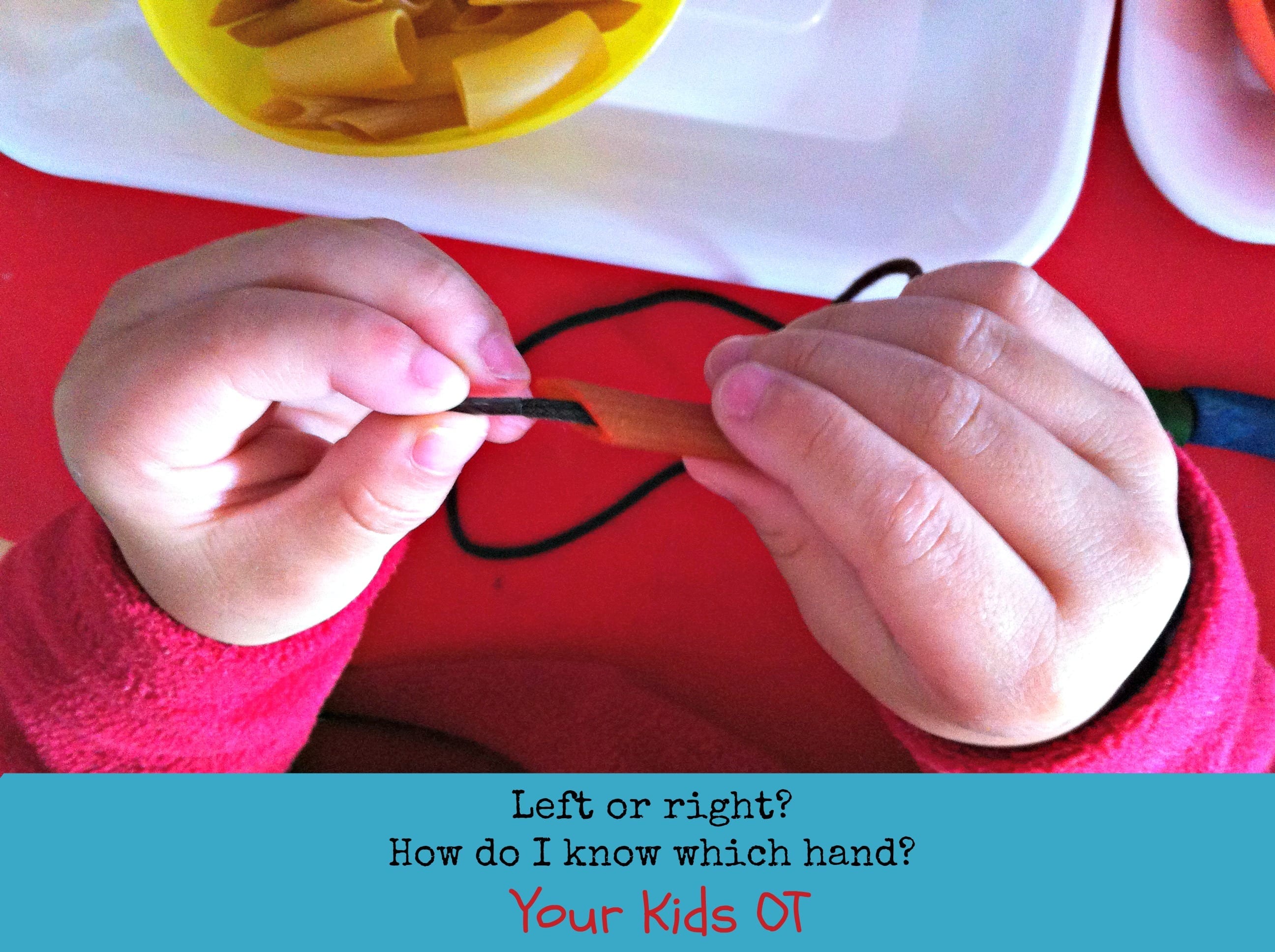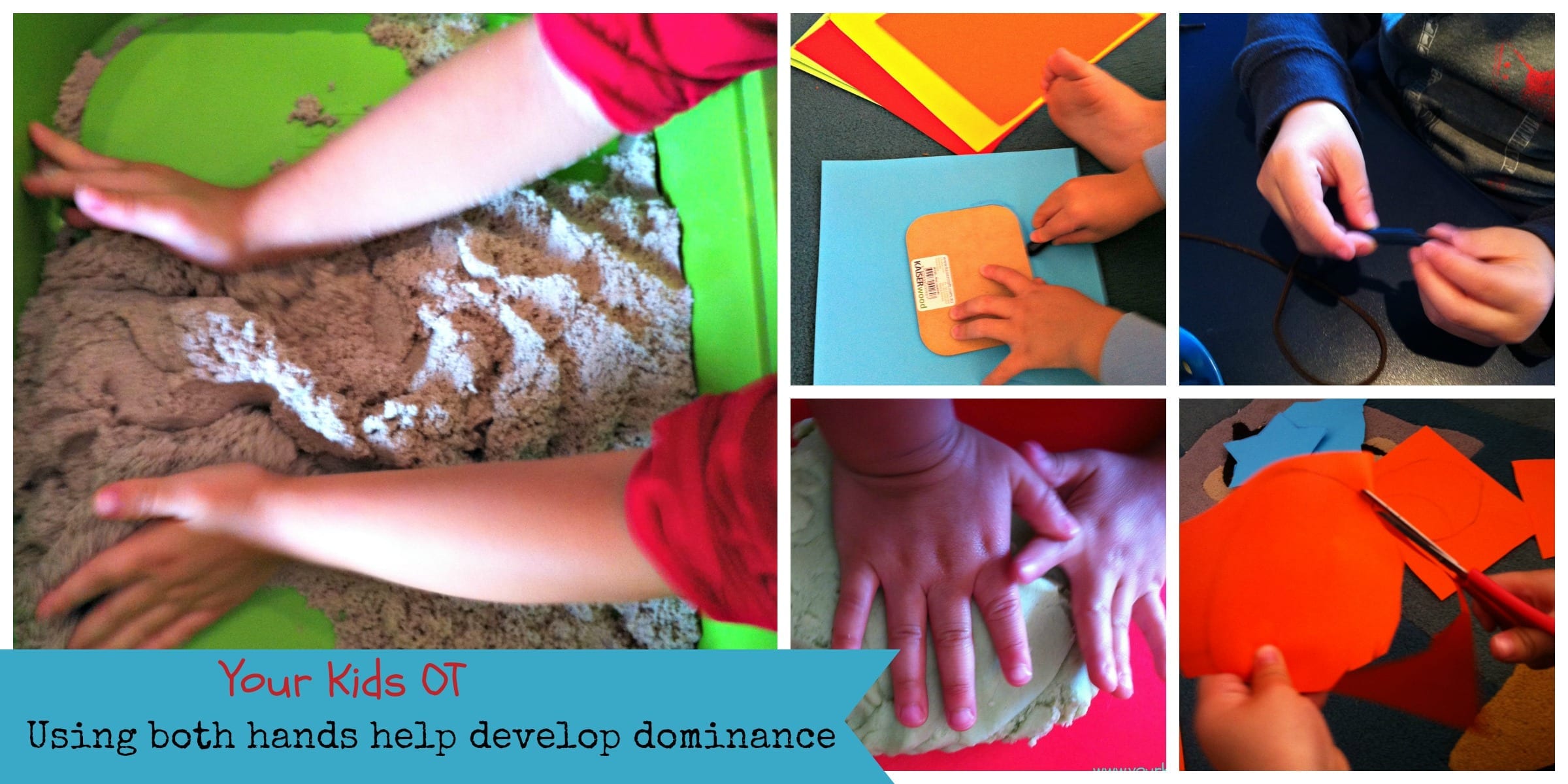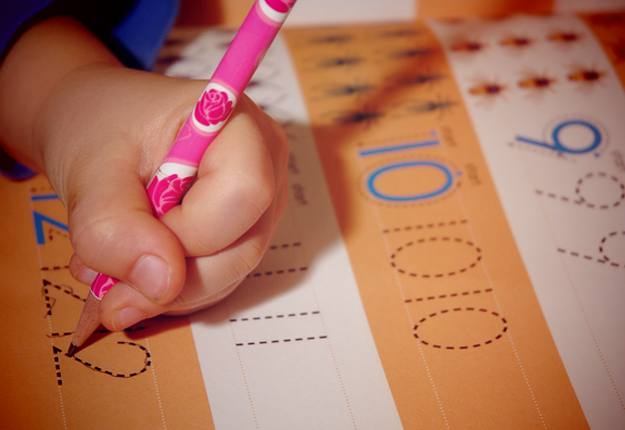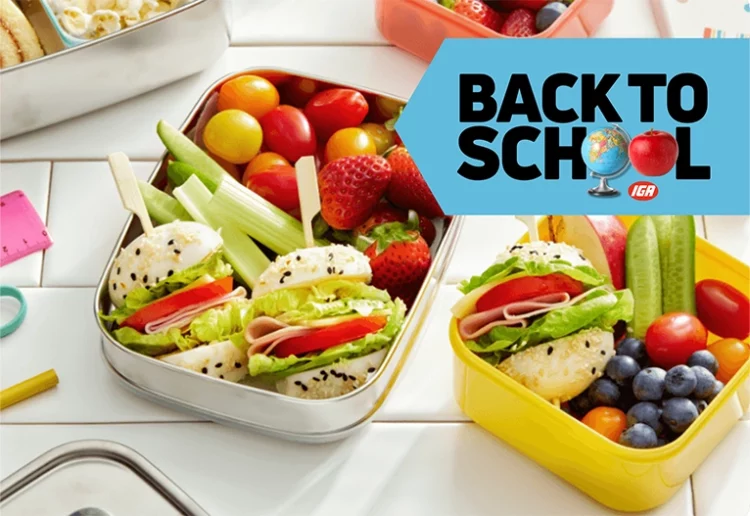How do I know if my child is left or right handed? When should I know?
Before a child can develop a “dominant” hand that is skilled for holding a pencil or scissors, they need to be able to use both hands together.

The ability to use both hands together (and both sides of the body at the same time) in a coordinated way is called bilateral coordination.
Both sides of the body may be doing the same action (eg. clapping, using a rolling pin or jumping) or alternating movements (eg. crawling or skipping).
As this develops, children learn to reach across their body to the space of other side to reach for toys (crossing the midline).
If this hasn’t developed you may see your child switch their crayon from their left hand to the right hand as they draw across a page.
As a child develops bilateral coordination, they develop a stronger (dominant) side that works at something whilst the other (non dominant side) assists and helps with stability.
This is seen in hopping, writing, cutting, threading and lots of two handed activities.
The dominant side is often called the “worker hand” and the non dominant side is called the “helper hand”.
This generally emerges consistently when a child is 3 or 4 years and becoming skilled at playing with their hands and should be established when they begin school (at about 5 years).
Whilst some people are ambidextrous (use both hands skilfully), this is quite rare. Choosing a dominant hand will help your child to develop accuracy and speed for fine motor activities.

How can you help?
- Place objects in the midline (in the middle) so your child can choose their dominant side.
- As preschoolers get ready for school, they should spend lots of time doing activities that encourage bilateral coordination (such as play dough, threading, folding and ripping paper, block play, cutting, painting, drawing, stamping, ball play, hammering, climbing, playing musical instruments, etc).
- Little hands may also tire easily if they have not developed fine motor skills. Encourage lots of activities (this list above is a good start) that will help to develop fine motor skills and may reduce switching hands.
- In the months before school, help your child to develop a “worker” hand and “helper” hand. Usually a child will have chosen a hand by using it most of the time with the occasion switch to the other hand to do the “work”.
Has your child developed hand dominance?





















8:12 am
2:44 pm
10:59 pm
8:22 pm
2:54 pm
12:56 pm
1:59 pm
7:02 am
-

-
-
Your Kids OT replied
- 13 Oct 2014 , 9:13 pm
Reply3:42 pm
-

-
-
Your Kids OT replied
- 13 Oct 2014 , 9:15 pm
Reply1:15 am
-

-
-
Your Kids OT replied
- 04 Oct 2014 , 9:35 pm
Reply10:01 pm
-

-
-
Your Kids OT replied
- 29 Sep 2014 , 8:38 pm
Reply9:34 pm
-

-
-
Your Kids OT replied
- 29 Sep 2014 , 8:36 pm
-

-
-
june11 replied
- 27 Dec 2014 , 11:37 pm
Reply2:36 pm
-

-
-
Your Kids OT replied
- 23 Sep 2014 , 10:30 pm
Reply10:25 am
-

-
-
Your Kids OT replied
- 23 Sep 2014 , 10:30 pm
-

-
-
june11 replied
- 15 Feb 2015 , 3:45 pm
Reply5:05 pm
-

-
-
Your Kids OT replied
- 09 Sep 2014 , 4:09 am
Reply3:59 pm
-

-
-
Your Kids OT replied
- 31 Aug 2014 , 10:07 pm
Reply9:23 am
-

-
-
Your Kids OT replied
- 31 Aug 2014 , 10:05 pm
Reply2:15 pm
-

-
-
Your Kids OT replied
- 30 Aug 2014 , 8:41 pm
Reply6:27 pm
-

-
-
Your Kids OT replied
- 30 Aug 2014 , 8:39 pm
Reply10:02 pm
-

-
-
Your Kids OT replied
- 24 Aug 2014 , 10:42 pm
Reply- 1
- 2
- …
- 5
- »
Post a commentTo post a review/comment please join us or login so we can allocate your points.